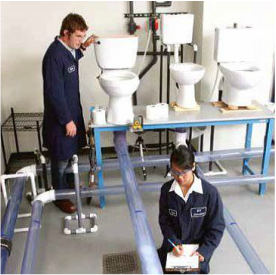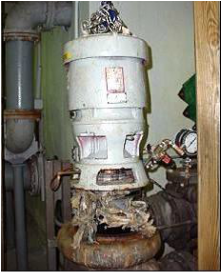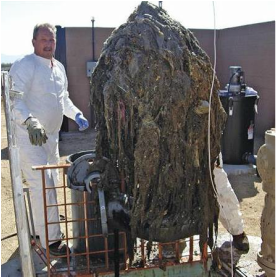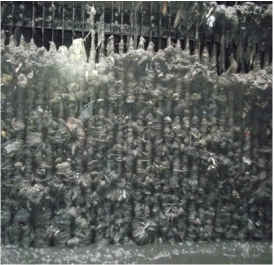 Harry Price, P.E. Senior Principal Engineer Harry Price, P.E. Senior Principal Engineer The “flushable wipe” has evolved into a large part of the hygiene products market. The problem is that many of these products do not break down in their trip through the collections systems of our communities, nor do they break down in septic systems. As a result thousands of dollars are spent each year by individual collection systems or disposal system’s owners to remove the wipes. The following are quotes from various communities across the country:
The combined consumer and industrial sales of wipes in 2014 was approximately $13 billion dollars, up roughly $5 billion from 2004. There was a corresponding increase in problems with wipes that do not break down (disperse) in collection systems. These un-dispersed wipes can also result in problems at treatment plants by blocking protective screens and reducing the efficiency of pumps. The vast majority of the wipes remain intact after flushing and ultimately result in ragging. Ragging can be defined as the accumulation of intact flushables on sewer defects such as roots, improperly constructed lateral connections, or other obstructions. The trapped flushable in turn can accumulate fats, oils, and grease which can lead to blockages. Some of these blockages can be enormous, such as several recently encountered under the City of London in the United Kingdom. On the Oakland Macomb Interceptor Drain, ragging (much of which is from flushables) accumulates on the bar screens at the Northeast Sewage Pumping Station and impacts impact the dewatering of the OMID during the ongoing repair program. Such an accumulation on the lateral from your house to the sewage collection system can result in flooding of your basement. Cities have undertaken a number of means to address the problems with the flushables in their collection systems. The City of Grand Rapids, Michigan recently received an award for their anti-flushables educational campaign to explain why the wipes should not be sent into their collection system. Other communities have undertaken more direct action to reduce flushables. The Associated Press reported that in one western New York town, the problems caused by the wipes became so severe that sewer workers set up traps to catch wipes in order to evaluate which households were contributing to the problem. Offending homeowners were notified in person by collections system workers. What can we do? Its simple. Avoid disposing of wipes down the toilet. An alternative solution is to use toilet paper moistened with water from a small spray bottle instead of using wipes. |
|
3 Comments
Kyle Vandorghman
4/26/2020 12:13:06 pm
The root of the problem are the manufacturers of " flushables " and misleading advertising. They should be held to a higher standard and create,if possible, a truly flushable wipe that breaks down. The costs of maintaining, repairing or replacing infrastructure equipment should be passed on to the industry by imposing legislation that levies an industry-wide tax for remediation.
Reply
4/3/2024 08:16:59 pm
You are right and these ideas will help us to find new ways to use Wipes. These ideas can resolve the problems if we focus on this issue.
Reply
Leave a Reply. |
The NTH NarratorNTH Consultants, Ltd. (NTH) is a nationally recognized engineering firm specializing in Civil, Geotechnical, Environmental, and Facilities Engineering. Archives
April 2024
|





 RSS Feed
RSS Feed